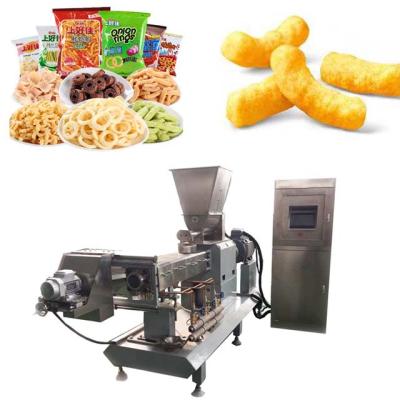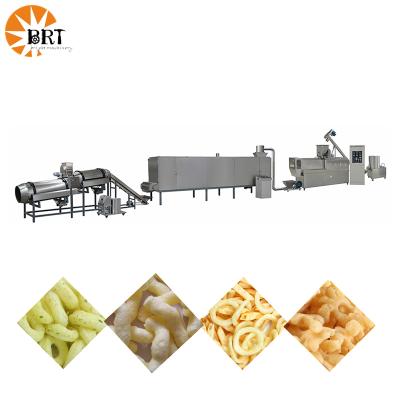Daily Troubleshooting of Twin-screw Extruder
Daily Troubleshooting of Twin-screw Extruder
The twin-screw feed extruder is mainly composed of a barrel and a rotating extrusion twin-screw in the barrel. When the equipment is running, the material enters the material cavity through the feeding port, and the screw is rotated and extruded to be transported forward. Under the action of thrust, friction, shear force and heat, a high-pressure and high-temperature difference is formed inside and outside the cavity. The moment the material is extruded, Instant expansion due to pressure difference.
1.Blocked and unable to discharge material
(1) The raw material particle size is too large relative to the die hole size
(2) Feeding too much and too fast in a short period of time
(3) Foreign matter blocks the discharge port
(4) The diameter of the pressure ring is too small, the water supply and steam pressure are too small, and the temperature adjustment is not enough.
Solution: For materials with too large particle sizes, they need to be crushed to the appropriate particle size; adjust the feeding speed and feeding amount, stop the machine to check and clean foreign matter; replace the mold and readjust the water flow to ensure sufficient water pressure and steam pressure.
2.Poor discharging and forming
Particles vary in diameter and shape
(1) Uneven size of die holes;
(2) The blade is worn and the cutting speed is too fast or too slow;
(3) The temperature is too high or too low during processing;
(4) The raw material formula is inappropriate and the moisture content of the material is too high or too low.
Solution: Configure the appropriate die hole, check the blade wear and replace it in time, adjust the cutting speed, modulator temperature and steam entry amount.
3.What comes out is mushy thin material
Water supply and steam pressure are too high
lSolution: Readjust the water flow to ensure appropriate water pressure and steam pressure.
Back spraying of expanded material powder
Feeding is too fast or too much, or discharging is not smooth or blocked.
Solution: Control the feeding speed and investigate the reasons for failure to discharge materials one by one.


